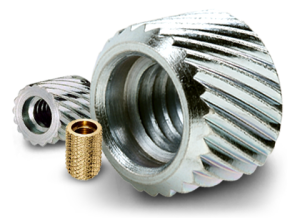With a growing demand for end-use parts for 3D printing and rapid prototyping needs, the Pennsylvania threaded metal insert manufacturer has begun providing custom tooled applications as well as downloadable technical data that can be used to integrate their parts into new products during the prototyping and CAD design phase.

“Manufacturers recognize 3D printing reduces design, prototyping and production time, which is why our customers are integrating threaded metal inserts into 3D printed fixtures and molds,” said Yardley Products Steve Cashin. “This is a cost-effective way for manufacturers to test threads and adjust insert holes during various design iterations.”
Here is video explaining the Yardley business in detail:
If their available part options are not sufficient then Yardley is happy to help its customers design a custom fitting if needed. They offer technical data on their more than 20,000 products and maintain a database for all of their products 2D and 3D CAD data for easy download.
By making their CAD files accessible, customers can intentionally design their products to fit available parts rather than create a part in need of a custom designed fitting. Not only does this save time during the prototyping phase by eliminating the need to machine custom parts, but it also reduces the cost of prototyping by eliminating design errors and shortcomings.


